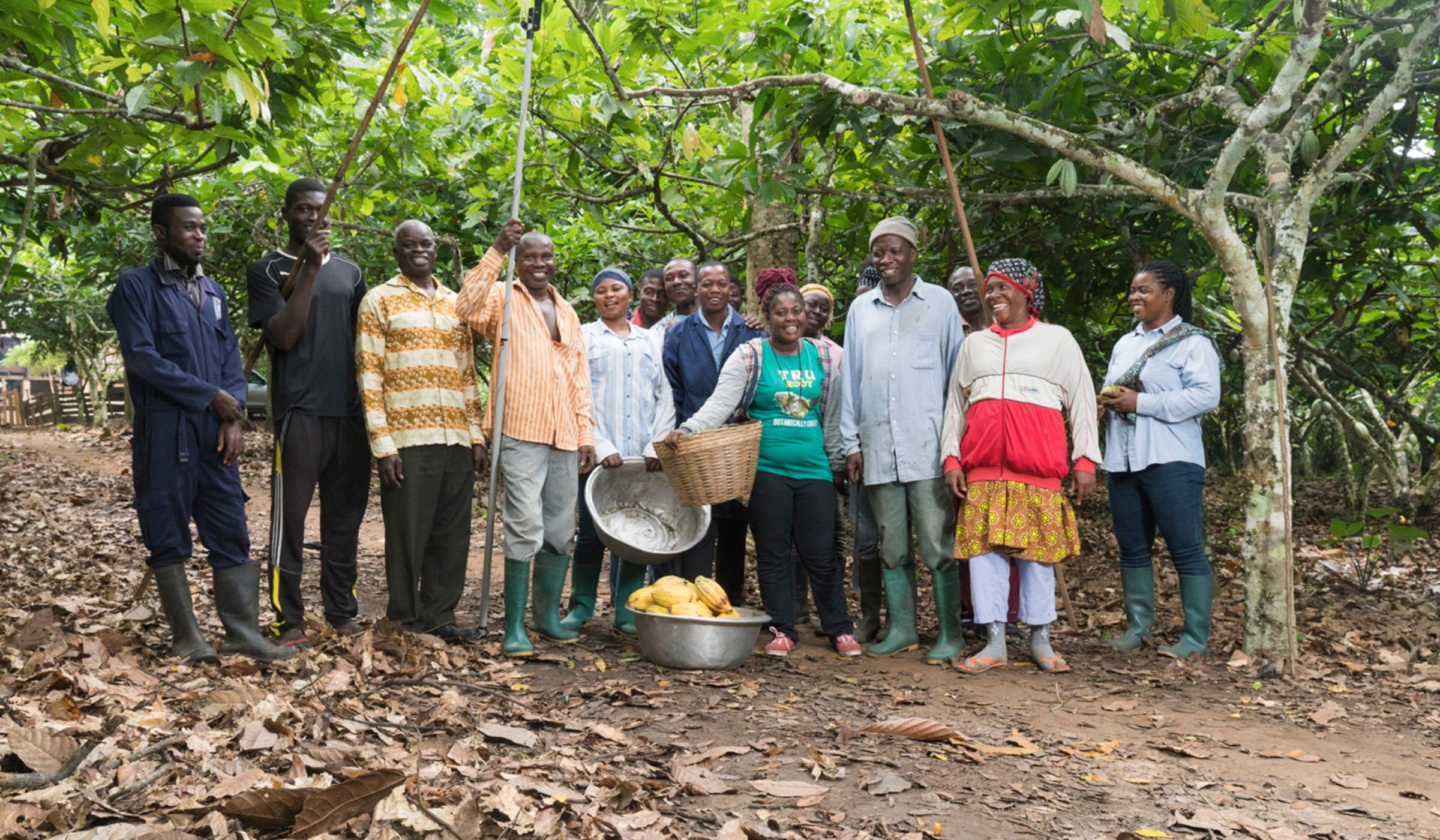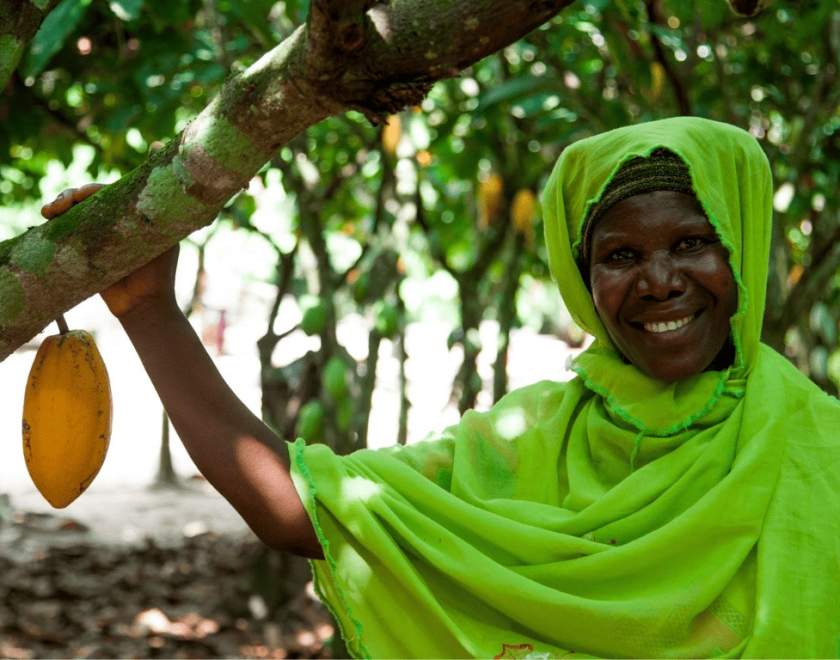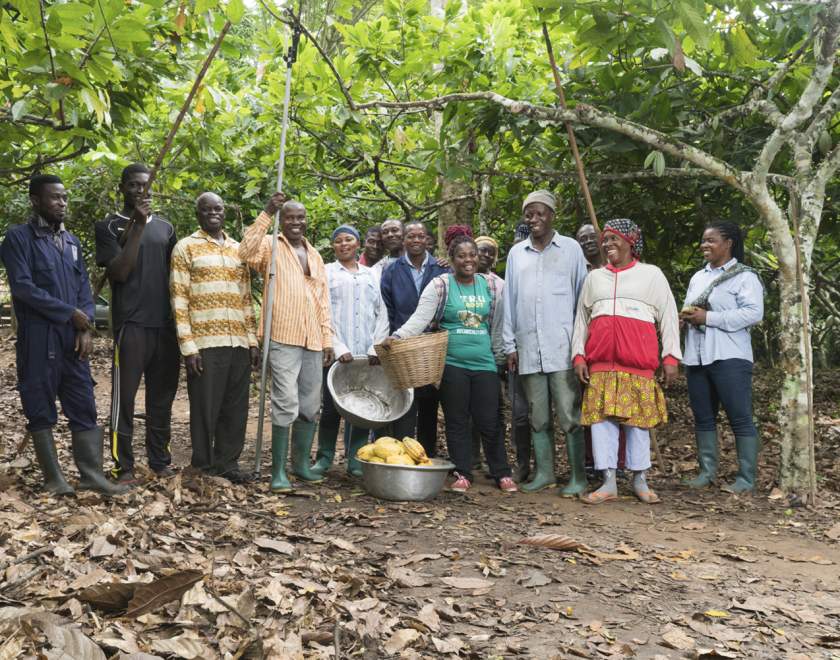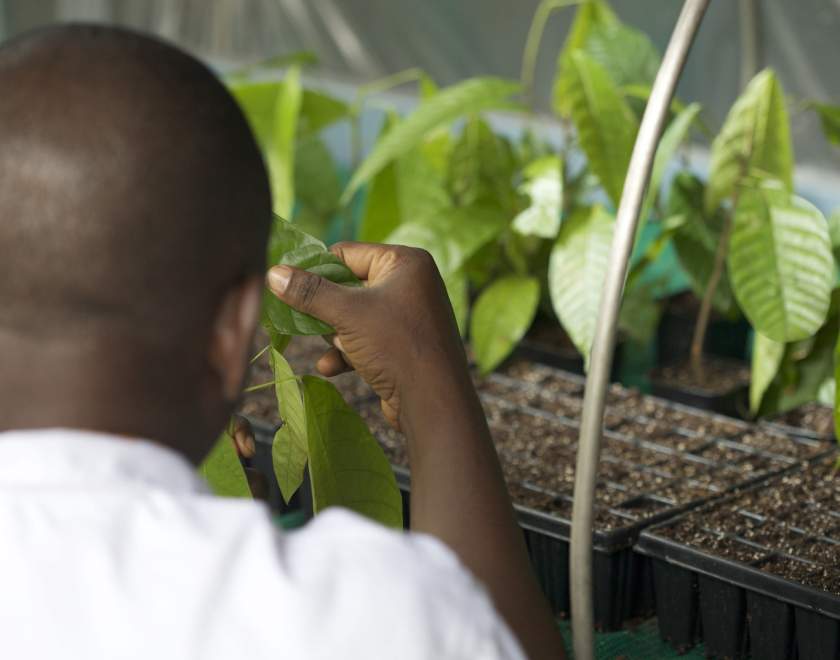
Many cocoa farmers and their workers do not earn enough money for a decent life for themselves and their family.
Reasons include the low wages workers get and the low prices smallholder farmers can charge. According to calculations made by the 2020 Cocoa Barometer, income from cocoa should be at least $3,166 a metric ton for Côte d’Ivoire, and $3,116 a metric ton for Ghana, whereas in reality it amounts to $1,804 and $1,810 respectively.
To fight poverty at the roots, it would make sense to change the way prices are set. Prices should be set at levels that ensure fair incomes for the farmers. A fair price must cover at least the minimum a farmer needs for a decent income as well as all production costs including wages, plus a margin for investing.
Distorted market prices
In conventional economic theory, price is determined by supply and demand. The market price is the price at which the supply of and demand for a product reach equilibrium. In reality, however, market prices are determined by a wide range of other factors that have nothing to do with supply and demand. Market prices often diverge from equilibrium prices for several reasons:
- Some markets are imbalanced because they have only a single buyer or a few buyers
- Prices can be distorted by subsidies, import/export restrictions and other government interventions
- Speculation on futures markets can have important effects on prices
Because of these reasons, more attention should be given to an ethical approach, based on human rights, instead of relying on market forces alone. The 1948 Declaration of Human Rights supports such an ethical approach.
Human Rights
The 1948 Declaration set out fundamental human rights to be universally protected. The Universal Declaration is not a treaty, so it does not directly create legal obligations for States. It is an expression of the fundamental values which are shared by all members of the international community.
Article 23 of this Declaration states that “everyone who works has the right to just and favourable remuneration”. Article 25 mentions a worker’s “right to a standard of living adequate for the health and well-being of himself and his family, including food, clothing, housing and medical care and necessary social services”.
The Sustainable Development Goals (SDGs), which the UN adopted unanimously in 2015, point in the same direction. For example, SDG1 is “no poverty”, and SDG2 is “zero hunger”.
In cocoa, many private-sector companies have made pledges on corporate social responsibility and work towards payment of a living wage and income. To achieve a living wage and income, payment of fair prices is essential. These basic human rights alone are already a sufficient reason to implement the payment of fair prices. There is however also a second important argument for the payment of fair prices, namely the problem of climate change.
Climate Change
Cocoa farmers must adapt to rapidly changing climatic conditions. For smallholder farmers, this is difficult. They already can barely survive and have no financial resources to purchase new tools or seeds to invest in a more diverse production. The World Bank writes that climate change hits the poorest people the hardest. As the effects of climate change worsen, escaping poverty becomes more difficult. Because of climate change, cocoa farmers must invest even more than they used to do. Therefore, it is important that the prices they get allow them not only to have a decent living, but also enable them to make the necessary investments. Since the concepts of living wage and living income are at the basis of a decent income, let’s explain these concepts as they have been defined by the Living Income Community of Practice and the Global Living Wage Coalition.
Living Wage, Living Income
A living wage is the remuneration received for a standard workweek by a worker in a particular place sufficient to afford a decent standard of living for the worker and her or his family. Elements of a decent standard of living include food, water, housing, education, health care, transportation, clothing, and other essential needs including provision for unexpected events. A living income is the net annual income required for a household in a particular place to afford a decent standard of living for all members of that household.
Fair Prices
Several organizations have focused on promoting fair pricing policies for several years. Examples include development agency GIZ and certification organization Fairtrade. In the cocoa sector, the Voice Network and others promote price reform. Reform of pricing in agricultural products would involve shifting the focus of price-setting to the needs of farmers rather than relying on the imagined “invisible hand” of the market. This implies price setting based on the amount needed for living wages and incomes. This should be done by governments as well as by companies. It would ultimately result in living incomes for farmers.
As explained in my 2021 book The Economics of Human Rights: Using the Living Income/Fair Price Approach to Combat Poverty, this approach adds up farmers’ cocoa production costs, the income level they need for decent living and their further investment needs for cocoa. Next, it divides that sum by cocoa yields. Obviously, a farmer might be able to generate higher yields by using better seed, adding land, installing better irrigation, or applying fertiliser more effectively. The living income / fair price pricing calculation takes this into account, by raising the amount of the living income with a margin to ensure that the farmer can make such improvements. After having made these improvements the fair price will go down, leaving more income to the final consumer.
Setting prices in such a way does not necessarily lead to much higher consumer prices, because often removal of supply-chain obstacles can ensure that consumers do not pay excessive prices. Examples of supply-chain obstacles are oligopolistic practices and methods of calculations in the chain where every next link in the chain receives a percentage instead of a fixed amount. Working with percentages leads to an unrealistic increase in consumer prices when farmers’ prices rise. This is because a small rise in the farmers’ price leads to enhanced profits in the whole chain. Keeping profits in the chain at the same level as before, would lead to a lesser rise in consumer prices. At the same time, the removal would boost smallholders’ opportunities. Higher wages for poor families will allow more parents to ensure that children attend school and are not forced into child labour because of lack of family income.
As a step in the good direction to prevent child labour, Nestlé last month announced that cocoa farming households will receive payments for sending their children to school. With this announcement, Nestlé takes an important step towards a system leading to the payment of prices that will enable a decent living for cocoa farmers and their workers.




